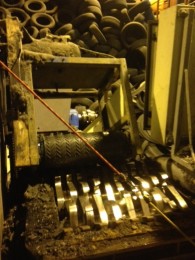Technibond Limited , an adhesive tape manufacturing company, was fined £6,766 (inc.costs) after a worker lost a finger in an unguarded machine.
The circumstances were:
- A machine had unguarded in-running nips.
- Perspex guards (supplied by the manufacturer) were available, but not fitted.
- Technibond was not aware that these guards were available, though instructions on using the guards are contained within the instruction manual.
- On 19 August 2014 a worker was cleaning one of the machines whilst it was running.
- The cloth she was holding was drawn into the in-running nip which also caused her finger to be pulled in to the machine.
- The damage sustained resulted in her finger needing to be amputated.
The HSE Inspector said:“Employers must ensure they prevent access to dangerous parts of machinery and in doing so they must consider hardware controls over information, instruction, training and supervision. However, where they do rely on these software controls they must ensure that they are effective to prevent anyone being harmed by the machinery.”

